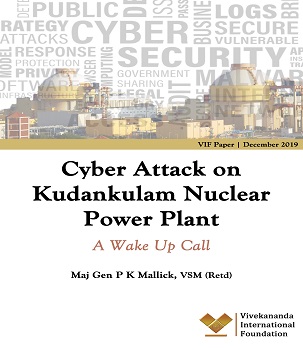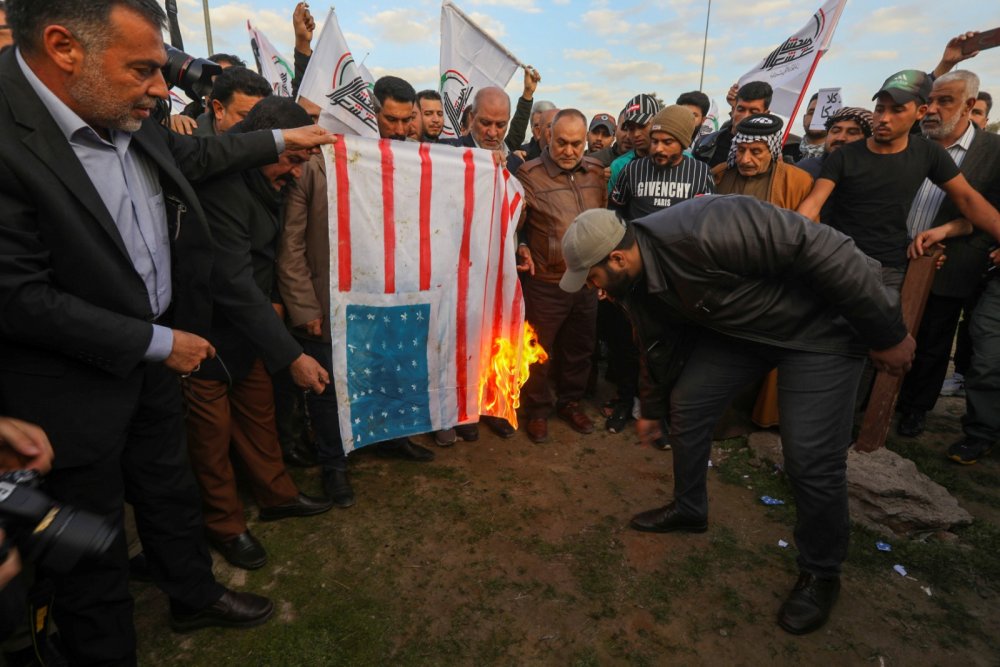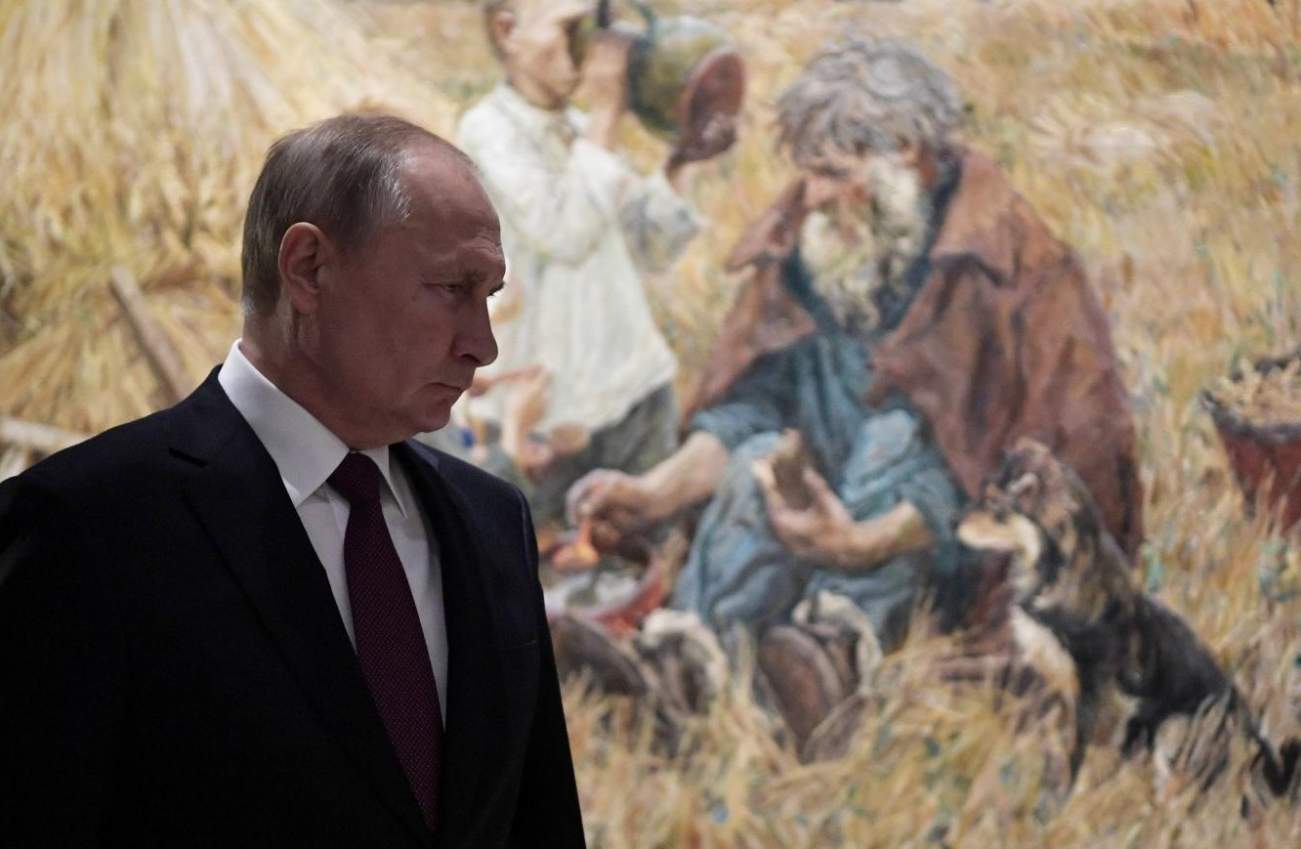Pages
▼
1 January 2020
***Cyber Attack on Kudankulam Nuclear Power Plant – A Wake Up Call
Maj Gen P K Mallick, VSM (Retd)
The media is agog with the report of a cyber attack in India’s largest civil nuclear facility - the Kudankulam Nuclear Power Plant (KNPP) in Tamil Nadu. Cyberspace provides a new opportunity for determined adversaries to wreak havoc at nuclear facilities possibly without ever setting foot inside the nuclear plant. If the network that runs the machines and software controlling the nuclear reactor are compromised, cyber attacks on nuclear power plants could have physical effects. This can be used to facilitate sabotage, theft of nuclear materials and sensitive information, or at its worst, a reactor meltdown. In a densely populated country like India, any radiation release from a nuclear facility would be a major disaster. Threats may be posed by nation states, terrorists, extremists, criminals including organized groups, outsiders such as suppliers or insiders acting intentionally or negligently.
There is no such thing as a perfectly secure system. Systems are going to be breached - even one that may be disconnected from the Internet. Those looking to attack critical infrastructure can wait for years for a single mistake to be made. This is cyber warfare and vulnerabilities are going to be found. There have been over 20 known cyber incidents at nuclear facilities since 1990 all over the world which shows that the nuclear sector is not immune to cyber related threats. As the digitalization of nuclear reactor instrumentation and control systems increases, potential for malicious and accidental cyber incidents also increases. Authorities responsible for cyber security of nuclear installations have to be constantly on the vigil.The media is agog with the report of a cyber attack in India’s largest civil nuclear facility - the Kudankulam Nuclear Power Plant (KNPP) in Tamil Nadu. Cyberspace provides a new opportunity for determined adversaries to wreak havoc at nuclear facilities possibly without ever setting foot inside the nuclear plant. If the network that runs the machines and software controlling the nuclear reactor are compromised, cyber attacks on nuclear power plants could have physical effects.
** Rise of China, History, Technology, Policies: Implications for India
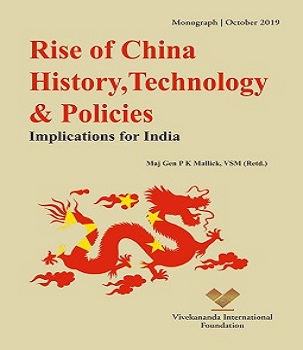 Since opening up to foreign trade and investment and implementing free market reforms in 1979, China has become the world’s fastest-growing economy. China has transformed itself from a predominantly agricultural economy into a manufacturing powerhouse. China has taken a leading role in several critical emerging technologies. ‘Made in China 2025’, laid out how and why China would need to move up the technology ladder and close the gap with developed countries.
Since opening up to foreign trade and investment and implementing free market reforms in 1979, China has become the world’s fastest-growing economy. China has transformed itself from a predominantly agricultural economy into a manufacturing powerhouse. China has taken a leading role in several critical emerging technologies. ‘Made in China 2025’, laid out how and why China would need to move up the technology ladder and close the gap with developed countries.
China's $ 11 trillion economy is almost five times that of India. China is way ahead of India in terms of technology. The US-China trade war helped Indian exports to China. India has been taking notable steps forward in innovation, supported by Prime Minister Narendra Modi’s reform agenda.
Regional Comprehensive Economic Partnership can derail India’s ‘Make in India’ programme. India has major concerns. India has to do some very tight rope walking. India manufacturing industry has no option but to be globally competitive to survive in today’s globalized world.
Despite the border tensions India has to engage China economically to reduce the trade deficit between the two countries, take advantage of the ongoing US China trade war, get FDI from China and collaborate in emerging technologies to take Indian economy forward.
Lt Gen SRR Aiyengar, PVSM, AVSM, VSM (Retd), Social Media – A Study of Social Media and Its Impact on Contemporary War/Conflicts, Uday Publishing House, 2019, PP. 152, ISBN: 978-93-85991-85-1, INR- 699/-
 Development of Social Media (SM) is a relatively new phenomenon. Between 2004 and 2014, all 22 of the world’s biggest Social Media (SM) networks were developed and launched. The Facebook was the first to be started on February 4, 2004. Rapid global increase in mobile telephone usage helped the growth of SM. SM can be fun, exciting, entertaining and useful for maintaining relationships. For marketing, managing their public image, connect with customers and solicit ideas and feedback people can use social media websites for professional reasons. SM can be used to issue warnings for cyclones, floods or other disasters. Home bound people who are ill, stay-at-home parents, or retired use social media to stay connected.
Development of Social Media (SM) is a relatively new phenomenon. Between 2004 and 2014, all 22 of the world’s biggest Social Media (SM) networks were developed and launched. The Facebook was the first to be started on February 4, 2004. Rapid global increase in mobile telephone usage helped the growth of SM. SM can be fun, exciting, entertaining and useful for maintaining relationships. For marketing, managing their public image, connect with customers and solicit ideas and feedback people can use social media websites for professional reasons. SM can be used to issue warnings for cyclones, floods or other disasters. Home bound people who are ill, stay-at-home parents, or retired use social media to stay connected.
SM can also be used for political polarization and radicalization. SM is being used by both state and non state actors to further their own interests.SM has been utilized to recruit terrorists, organize revolutions and riots, encourage attacks, collect funds, glorify gangs and spread violence. Terrorist organizations like al-Qaeda and the Islamic State exploit the social media to radicalize, recruit and deploy young people in service of their terrorist causes. The 2011 Arab Spring and 2011 London riots have shown how social media can impact matters of national security. A recent Oxford University study found evidence of disinformation campaigns run by state actors in more than 70 countries around the world. Most of these countries are authoritarian regimes that use SM to threaten activists and journalists with hate and violence, spread pro-government propaganda and drown out opposing voices.
The Security Stories That Shaped 2019, Part Two
BY LARA SELIGMAN, ROBBIE GRAMER
Welcome to Foreign Policy’s Security Brief. For the holidays, we’re bringing you a special edition: a roundup of the top 10 stories from 2019. Below are the final five. (Find the first five here.) We’ll return to our twice weekly schedule next week.
6. Protests Sweep the Middle East
A wave of protests swept across Iran, Iraq, and Lebanon this year, presenting the biggest challenge to governments in years and throwing off balance the influence of Iranian proxies in Lebanon and Iraq. In Lebanon, simmering disenchantment with the political elite erupted into widespread protests that forced Prime Minister Saad Hariri to resign and prompted almost immediate calls for his successor to step down, too.
Protests in Iraq also forced Prime Minister Adel Abdul-Mahdi to resign after a deadly crackdown. And in Iran, the regime responded to widespread anti-government protests with brute force, shutting down the country’s internet for a week and killing hundreds of protesters.
Afghanistan's Taliban ruling council ready for ceasefire with US
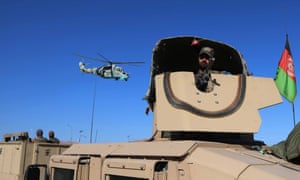 The Taliban’s ruling council has agreed to a temporary ceasefire in Afghanistan, providing a window in which a peace agreement with the United States can be signed, officials from the militant group have said. They did not say when it would begin and there was no immediate response from Washington.
The Taliban’s ruling council has agreed to a temporary ceasefire in Afghanistan, providing a window in which a peace agreement with the United States can be signed, officials from the militant group have said. They did not say when it would begin and there was no immediate response from Washington.
A ceasefire had been demanded by Washington before any peace agreement could be signed. A peace deal would allow the US to bring home its troops from Afghanistan and end its 18-year military engagement there, America’s longest.
The US wants any deal to include a promise from the Taliban that Afghanistan would not be used as a base by terrorist groups. The US has an estimated 12,000 troops in Afghanistan.
The Taliban chief must approve the ceasefire decision but that was expected. The duration of the ceasefire was not specified but it was suggested it would last for 10 days.
Four members of the Taliban negotiating team met for a week with the ruling council before they agreed on the brief ceasefire. The negotiating team returned on Sunday to Qatar where the Taliban maintain their political office and where US special peace envoy Zalmay Khalilzad has been holding peace talks with the religious militia since September 2018.
The Afghan Peace Talks, China, and the Afghan Elections
GRANT FARR
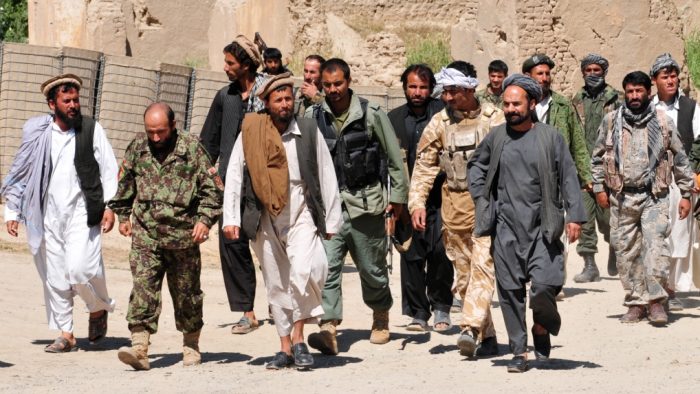 After more than a year of negotiations it appeared in the fall of 2019 that an agreement had been reached between the United States and the Afghan Taliban. Yet before the agreement could be formally signed, the United States backed away from the agreement citing the death of an American serviceman as a result of a Taliban bomb. The negotiations are now officially on hold, although Zalmay Khalilzad, the United States Special Representative, continues to talk to the Taliban through other channels. The failure, at least so far, of an agreement between the United States and Taliban has numerous consequences, including the chaotic Afghan elections, the continuation of the fighting, the halt to the release of prisoners, and the dramatic increase in civilian deaths. In addition, China has shown that it would like to be a player in Afghanistan. With the peace talks between the United States and the Taliban on hold, China, which has economic and political interests in Afghanistan, is attempting to inject itself into the Afghan peace process by offering to hold the next round of negotiations in Beijing. The failure of the peace talks has also affected the Afghan presidential election, which had been long postponed. The election finally took place on September 28, 2019, but not without considerable controversy and conflict. The election might not have taken place at all had the peace agreement been ratified. While just holding the election can be seen as an accomplishment, the election was so flawed that that the results, should they ever be announced, may cause more conflict than had the elections not been held.
After more than a year of negotiations it appeared in the fall of 2019 that an agreement had been reached between the United States and the Afghan Taliban. Yet before the agreement could be formally signed, the United States backed away from the agreement citing the death of an American serviceman as a result of a Taliban bomb. The negotiations are now officially on hold, although Zalmay Khalilzad, the United States Special Representative, continues to talk to the Taliban through other channels. The failure, at least so far, of an agreement between the United States and Taliban has numerous consequences, including the chaotic Afghan elections, the continuation of the fighting, the halt to the release of prisoners, and the dramatic increase in civilian deaths. In addition, China has shown that it would like to be a player in Afghanistan. With the peace talks between the United States and the Taliban on hold, China, which has economic and political interests in Afghanistan, is attempting to inject itself into the Afghan peace process by offering to hold the next round of negotiations in Beijing. The failure of the peace talks has also affected the Afghan presidential election, which had been long postponed. The election finally took place on September 28, 2019, but not without considerable controversy and conflict. The election might not have taken place at all had the peace agreement been ratified. While just holding the election can be seen as an accomplishment, the election was so flawed that that the results, should they ever be announced, may cause more conflict than had the elections not been held.
The Peace Talks
The US-China Tech Wars: China’s Immigration Disadvantage
By Remco Zwetsloot and Dahlia Peterson
Earlier this year, a Chinese technology executive published an opinion piece arguing that size is China’s greatest asset in technology competition with the United States today. His argument was simple: Innovation in emerging technologies such as artificial intelligence is partly a function of absolute numbers of scientists and engineers, and, as China continues to expand its domestic talent pipeline, its strength in numbers will soon far exceed that of the United States.
Many in Washington seem to agree. The White House’s education strategy draws motivation from China’s rapidly increasing number of university graduates. Experts lament the United States’ dependence on international talent and draw analogies with Sputnik to call for crisis-level educational spending levels similar to those in the post-Sputnik era.
But while a predominantly internal-facing workforce strategy worked for the United States during the Cold War, when it roughly equaled the Soviet Union in population, today it faces a rival four times its size. Domestic investments are absolutely necessary, but they are not sufficient.
Huawei assures Chinese people after a long trade war
By Wen Sheng
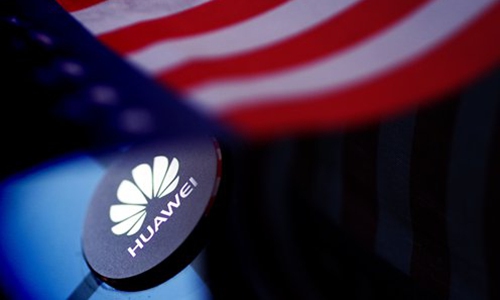 File photoThis year will pull down its curtain without much fanfare for the divisive tariffs war initiated by the US government, which has put global economic growth on the precipice. The tumult of the trade tussle is driving many people to shudder.
File photoThis year will pull down its curtain without much fanfare for the divisive tariffs war initiated by the US government, which has put global economic growth on the precipice. The tumult of the trade tussle is driving many people to shudder.
However, Huawei, a star technology company, bears the brunt of the US' ferocious assault, but refuses to surrender, and is now gaining even broader support from the world, which is all the more reassuring to the people who believe in impartiality and justice.
In May 2019, when the Trump administration accelerated the trade war against China by adding the company to a trade ban blacklist, the Chinese people were aghast and angry, as many disbelieved the company could survive the US attack.
However, the company is not only a Chinese company but also the world's Huawei.
Having started from scratch in the 1980s, Huawei is currently the global leader in information and telecommunications technology in both 4G and 5G, hardware and software, cloud computing and artificial intelligence, and many other hi-tech frontiers.
These are the threats we face in a dangerous decade ahead, says MARCO GIANNANGELI
By MARCO GIANNANGELI
Harold Wilson had withdrawn troops from "east of Suez". Western Europe was blue, the Soviet Union red, and the border between clear. Our generals knew our enemy, where he was, what he wanted and how to stop him.
We thought those days had gone when Jihadism replaced Communism as the doctrine that most threatened our way of life. Military planners shed conventional strategies to fight a new kind of war; one without defined boundaries where enemies hid in the shadows. Two decades later, we once again face great power competitors. In truth, they never went away. While we scrambled in deserts and fended off terror attacks at home, Russia, China and Iran spurned overtures by the West and expanded nationalistic strategies. Steadily, they redrew the battle map.
But this is more than a return to bygone days.
In 1975 we fought wars on land, sea and air. Now we need to add cyberspace and, soon, actual space. And our defence chiefs don't have the luxury of time to tackle each separately.
When it comes to conventional threats, Iran is arguably the most containable while Russia, still unrepentant over its 2014 territorial annexation in Ukraine, presents the biggest risk of military engagement.
Trade War and Peace
BY CHRIS MILLER
 Gen. Joseph Dunford, the then-chairman of the U.S. Joint Chiefs of Staff, and then-Chief of the General Staff of the Chinese People’s Liberation Army Fang Fenghui shake hands after signing an agreement n Beijing on Aug. 15, 2017.
Gen. Joseph Dunford, the then-chairman of the U.S. Joint Chiefs of Staff, and then-Chief of the General Staff of the Chinese People’s Liberation Army Fang Fenghui shake hands after signing an agreement n Beijing on Aug. 15, 2017.
“We have agreed to a very large Phase One Deal with China,” U.S. President Donald Trump tweeted on Dec. 13. “This is an amazing deal for all. Thank you!” he concluded. In a single moment, it seemed like the U.S.-Chinese relationship might be salvageable, after all. So will 2020 be a year of improvement in relations between Washington and Beijing? Don’t count on it.
Trump’s Trade Representative Robert Lighthizer declared the U.S.-Chinese deal “the most momentous day in trade history ever.” But 2019 is likely to be remembered not as a period of reconciliation in U.S.-Chinese economic relations but as the year when the Chinese-U.S. antagonism spun out of Trump’s control. His tweets can still roil the relationship like a missile test over the Taiwan Straits. At this point, even if Trump wanted to put this year’s antagonism behind him, it is not clear that he could succeed.
Sink Feeling: China Is Slowing Its Plans To Build More Aircraft Carriers
David Axe
 China reportedly is slowing its plan to acquire two aircraft carriers for each of its regional fleets.
China reportedly is slowing its plan to acquire two aircraft carriers for each of its regional fleets.
Instead of speeding ahead with the development of a six-carrier fleet -- two each for the northern, eastern and southern fleets -- the Chinese navy could stop after acquiring flattop number four.
“Plans for a fifth [carrier] have been put on hold for now, according to military insiders,” the Hong Kong South China Morning Post reported. “They said that technical challenges and high costs had put the brakes on the program.”
The possible pause in carrier-production could cement the yawning capability gap between the U.S. and Chinese fleets.
Pittsburgh Penguins' Mario Lemieux becomes the only National Hockey League player to score goals in five ways with 8–6 win over the New Jersey Devils.
Thomas Edison demonstrates incandescent lighting to the public for the first time, in Menlo Park, New Jersey.
In China’s Crackdown on Muslims, Children Have Not Been Spared
HOTAN, China — The first grader was a good student and beloved by her classmates, but she was inconsolable, and it was no mystery to her teacher why.
“The most heartbreaking thing is that the girl is often slumped over on the table alone and crying,” he wrote on his blog. “When I asked around, I learned that it was because she missed her mother.”
The mother, he noted, had been sent to a detention camp for Muslim ethnic minorities. The girl’s father had passed away, he added. But instead of letting other relatives raise her, the authorities put her in a state-run boarding school — one of hundreds of such facilities that have opened in China’s far western Xinjiang region.
As many as a million ethnic Uighurs, Kazakhs and others have been sent to internment camps and prisons in Xinjiang over the past three years, an indiscriminate clampdown aimed at weakening the population’s devotion to Islam. Even as these mass detentions have provoked global outrage, though, the Chinese government is pressing ahead with a parallel effort targeting the region’s children.
Nearly a half million children have been separated from their families and placed in boarding schools so far, according to a planning document published on a government website, and the ruling Communist Party has set a goal of operating one to two such schools in each of Xinjiang’s 800-plus townships by the end of next year.
China’s Space Force Is Way Ahead of Trump’s
Brendon Hong
 HONG KONG—Nearly a year and a half after Donald J. Trump ordered the Pentagon to establish the U.S. Space Force—a whole new sixth branch of the American armed forces—he signed the 2020 National Defense Authorization Act on Dec. 20. At least on paper, the U.S. Space Force is now a reality.
HONG KONG—Nearly a year and a half after Donald J. Trump ordered the Pentagon to establish the U.S. Space Force—a whole new sixth branch of the American armed forces—he signed the 2020 National Defense Authorization Act on Dec. 20. At least on paper, the U.S. Space Force is now a reality.
But the United States is late to this game. The Russians have been organizing and reorganizing space force variants since the 1990s. And more importantly, the Chinese Communist Party’s People’s Liberation Army has had such an organization up and running for the last four years. It’s called the PLA Strategic Support Force, and it is something of a technological juggernaut responsible for space, cyber, electronic, and psychological warfare.
“Outer space has become the new commanding heights in international strategic competition,” declared a document published by the State Council in Beijing in 2015. “Countries concerned are developing their space forces and instruments, and the first signs of weaponization of outer space have appeared.”
To What Extent Has China’s Security Policy Evolved in Sub-saharan Africa?
TANIA GONZÁLEZ VEIGA
As former Chinese Ambassador to UN Chen Jian stated, “in the past, unrest, civil war, military coups and so on, which took place far in the other side of the earth, have no direct association with Chinese interest, China can hold detached attitude towards them” (Xuejun, 2017), however, as China’s economic involvement and global role in Africa have deepened, the country has become increasingly entangled in African domestic affairs and conflicts (Stahl, 2016).
The social, economic and political instability of many African countries hinders their ability to supply natural resources to China. Furthermore, Chinese migration in Africa, accelerated in the late 1990s, has added a new complexity factor to Chinese-African relations as Chinese citizens living in Africa have increasingly been exposed to crime (Alden, 2014). Although traditionally China’s engagement in Africa has been mainly visible in the economic area due to the country’s search for natural resources, over the recent years China has understood that in order to develop a long-lasting and profitable relationship with Africa it also needs to direly take action in Africa’s unstable security environment.
With this aim, this paper provides an overview of the evolution of China’s security policy in Sub-Saharan Africa (SSA), an area of the African continent with a high concentration of Chinese nationals. First, the paper analyses China’s global foreign policy in order to understand China’s security policy in SSA. Later on, the study presents an overview of the security threats that China has faced over the last years in SSA to then show how, as a consequence of these security threats, China had no other choice but to adapt gradually its security policy in SSA. Finally, the essay concludes by assessing the current Chinese security approach in the region and envisaging its evolution in the future.
China in 2019: Celebrating the armed forces
 The Chinese People's Liberation Army and the People's Armed Police Force should always preserve their nature, purpose and character as the forces of the people, resolutely safeguard China's sovereignty, security, and development interests, and firmly uphold world peace.
The Chinese People's Liberation Army and the People's Armed Police Force should always preserve their nature, purpose and character as the forces of the people, resolutely safeguard China's sovereignty, security, and development interests, and firmly uphold world peace.
- Xi Jinping
2019 was a big year for the Chinese military, with a new national defense white paper released and the 70th anniversaries of the founding of the PLA Navy and Air Force celebrated.
Reasonable defense spending
The white paper is notable for what it represented in terms of the changes to the country's overall defense strategy and what remained consistent.
Graphics: Reform in China's national defense and armed forces
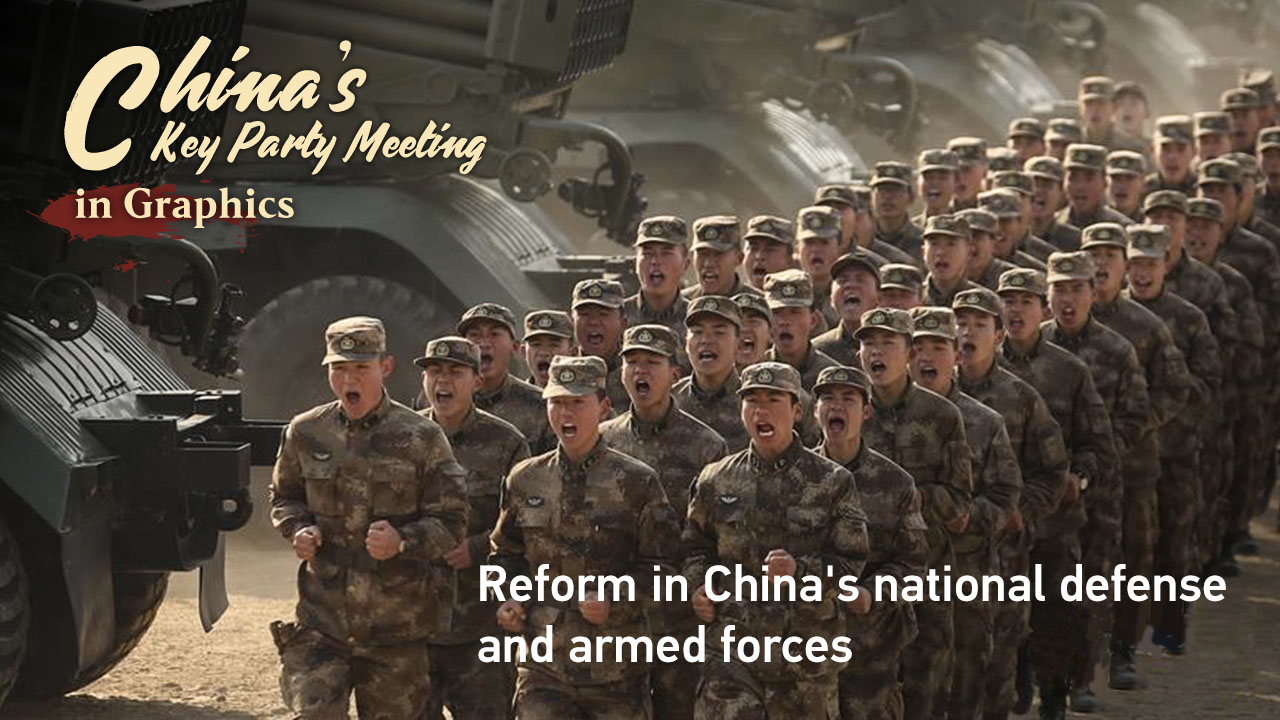 Deepening national defense and military reforms are in line with the requirements of the times to realize the Chinese dream of national rejuvenation and China's strong-military dream.
Deepening national defense and military reforms are in line with the requirements of the times to realize the Chinese dream of national rejuvenation and China's strong-military dream.
- Chinese President Xi Jinping
Four years ago, the Central Military Commission (CMC) released an official guideline on deepening the national defense and military reform. Carried out boldly and resolutely, national defense and military reforms took historic steps, and achievements in major fields were attained.
Regarded as one of the biggest military reforms in modern China, the latest military reform has been on the agenda for China's rejuvenation in the new era since the 18th Communist Party of China (CPC) National Congress, in 2012.
UN Secretary-General: US-China Tech Divide Could Cause More Havoc Than the Cold War
On Friday, WIRED spoke with António Guterres, the Secretary-General of the United Nations, about a topic of increasingly grave concern to him: the fracturing of the internet and the possibility that a technology meant to bring nations together might drive them apart. The conversation has been lightly edited for clarity.
Nicholas Thompson: It's an honor to get the opportunity to conduct this interview. Recently you gave a speech in Paris, where you talked about five great threats to the world. And you talked about the technological break. What did you mean? Why is it so in your mind right now?
António Guterres: I think we have three risks of divides: a geostrategic divide, a social divide, and a technological divide. Geostrategically, if you look at today's world, with the two largest economies, the Chinese economy and the American economy, and with the trade and technology confrontation that exists, there is a risk—I'm not saying it will happen—there is a risk of a decoupling in which all of a sudden each of these two areas will have its own market, its own currency, its own rules, its own internet, its own strategy in artificial intelligence. And that inevitably, when that happens, its own military and geostrategic strategies. And then the risks of confrontation increase dramatically.
Navy Confirms Boat Swarm Seen Alongside Carrier Group In This Satellite Image Was Iranian
BY JOSEPH TREVITHICK
The U.S. Navy has confirmed that "multiple" small Iranian boats running alongside the Nimitz class aircraft carrier USS Abraham Lincoln and other ships from her strike group as she sailed through Strait of Hormuz into the Gulf of Oman earlier this month, as seen in commercial satellite imagery. The service has rejected reports that any of the Iranian craft harassed or otherwise acted provocatively toward the carrier, saying the activity was within "normal behavior patterns." Still, the image of 18 small boats in very close proximity to Lincoln and her escorts is eye-opening and a stark reminder of the inherent risks of each transit through the Strait.
A PlanetScope satellite belonging to private satellite imagery firm Planet Labs, part of a constellation that takes images of much of the Earth every day, caught Lincoln making the transit out of the Persian Gulf by way of the Strait of Hormuz on Dec. 4, 2019. The image circulated for days in various formats on social media, causing considerable debate within the open-source intelligence community about what exactly was going on in the frame. Some media outlets, including in Iran, picked up on the narrative that the IRGC had "harassed," or at least "escorted," the Carrier Strike Group out of the Strait in a successful challenge to the United States amid a new spike in tensions between the two countries. We can now put this debate to rest.
The Year the Islamic State Lost Its Last Strongholds
 A member of the Iraqi forces walks past a mural bearing the logo of the Islamic State near Mosul, Iraq, on March 1, 2017.
A member of the Iraqi forces walks past a mural bearing the logo of the Islamic State near Mosul, Iraq, on March 1, 2017.
At the start of 2019, the Islamic State lost its last territory in Syria, and tens of thousands of its remaining members were imprisoned. Behind bars, they added to the ranks of terrorists already jailed in Iraq, Syria, and even in Western countries.
The year was bookended by another extremist event: Usman Khan’s stabbing attack in which two people were murdered in London while he was on parole after being sentenced on terrorism charges related to a 2012 attack plot. In the coming years, thousands more Islamic State and other terrorist prisoners will be released. And if what happened in the jails before that group’s rise is any guide, the consequences will be deadly.
Before 2013, when the Islamic State first started its expansion and took control of some land in Syria, the majority of Islamic State leaders had already spent time in the United States-run Bucca prison camp in Iraq. Many among the group’s rank-and-file had, too. Some Russian-language Islamic State recruitment videos used such heavy prison slang that they were hard for the average person to even understand.
America's Iraq War May Escalate After Airstrikes On Iranian-Backed Groups
by Seth J. Frantzman
Forty-eight tense hours separated an attack that killed a U.S. contractor at a base near Kirkuk on Friday, December 27, and U.S. attacks against the Kataib Hezbollah militia in Iraq and Syria on Sunday. It is a serious response that backs up six months of Washington’s rhetoric which has warned Iran of a strong and decisive response to any attacks by Tehran or its proxies.
The United States opened a new chapter in Iraq on Sunday with its airstrikes. The strikes, carried out by F-15s and other aircraft, hit five targets, three in Iraq and two in Syria. The largest strike hit a headquarters of Kataib Hezbollah in Al-Qaim and killed several members of the militia. According to local reports Abu Al-Khazali, a commander of Brigade 45 of the Popular Mobilization Units (PMU), was killed. Brigade 45 is made up of Kataib Hezbollah members and is officially a paramilitary unit within the Iraqi Security Forces.
The airstrike is a response to rocket fire that killed a U.S. contractor and wounded four U.S. personnel at the K-1 base northwest of Kirkuk. It was the latest of at least ten attacks since October 2019. These attacks actually began earlier this year when rockets were aimed at U.S. bases in February and May. When U.S.-Iran tensions skyrocketed in May the attacks increased. In May, Secretary of State Mike Pompeo flew to Iraq to warn of Iranian attacks. The attacks did come, but in the form of mining oil tankers in the Gulf and then the downing of a U.S. drone in June. Then Iran shifted tactics a bit, targeting Saudi Arabia’s Abqaiq facility and also targeting Israel. There were Iranian rocket attacks on Israel in May of 2018 and in January, September and November this year.
Surprise! When U.S. Fighters Approach Iran, Russia Jams Their Signal
by David Axe
 Russian forces have been jamming GPS systems in the Middle East. The electronic-warfare campaign could affect U.S. forces gathering in the region in advance of potential strikes on Iran.
Russian forces have been jamming GPS systems in the Middle East. The electronic-warfare campaign could affect U.S. forces gathering in the region in advance of potential strikes on Iran.
“Since last spring, pilots flying through the Middle East, specifically around Syria, have noted that their GPS systems have displayed the wrong location or stopped working entirely,” The Times of Israel reported in late June 2019.
The signal that has been disrupting satellite navigation for planes flying through Israeli airspace in recent weeks originates inside a Russian air base inside Syria, according to data collected by a U.S.-based researcher.
This interference to the Global Positioning System reception does not appear to be specifically directed at Israel, but rather the Jewish state is likely collateral damage in an effort by Moscow both to protect its troops from drone attacks and to assert its dominance in the field of electronic warfare, Todd Humphreys, a professor at the University of Texas, told The Times of Israel.
What Kissinger Teaches Us about Negotiating with Russia
WE NOW face a risk of a nuclear catastrophe arguably greater than at any point in the nuclear era, except perhaps during “Black Saturday,” the peak of the Cuban Missile Crisis in October 1962. Two years later, popular films such as Fail Safe and Dr. Strangelove dramatized the risks of an inadvertent nuclear conflict. If we look at the past fifty years, there were two times of heightened nuclear risk when the United States and the Soviet Union successfully negotiated breakthrough measures to reduce nuclear danger. On the U.S. side, the negotiations were led in the early 1970s by Henry Kissinger, producing détente and the Strategic Arms Limitation Talks (SALT) arms control agreements at the Nixon-Brezhnev Summit of 1972, and then in the 1980s by Ronald Reagan when, at the very first summit meeting with Mikhail Gorbachev in 1985, they agreed to create Nuclear Risk Reduction Centers (NRRCs). An examination of these two key historical moments suggests lessons for U.S.-Russian negotiations on nuclear risk reduction that arguably are as applicable today as they were then. These include specific steps to reduce the risk of unintended, accidental nuclear war; build a working relationship on nuclear issues insulated from political differences; and specific recommendations for current negotiations.
BY 1972, the nuclear risk arguably decreased significantly, and tensions eased. There had been major steps to that point—the Limited Test Ban Treaty in 1963 and the Nonproliferation Treaty in 1968—but after Kissinger negotiated détente, there was a dramatic improvement of relations with the Soviet Union that yielded SALT I, the first arms control deal between the superpowers that put a cap on numbers of strategic ballistic missile launchers. The Anti-Ballistic Missile Treaty was signed at the same time.
Infographic Of The Day: How Violence Is Disrupting The Global Economy
Taiwan’s Presidential Election: What to Know
By Joshua Kurlantzick
Taiwan’s voters will go to the polls on January 11 in one of the most consequential presidential elections in the island’s history. The two major candidates—incumbent Tsai Ing-wen of the Democratic Progressive Party (DPP) and challenger Han Kuo-yu of the Kuomintang (KMT)—provide stark contrasts on the most significant economic, security, and social issues.
The biggest difference is over China policy. Han favors closer ties to China and essentially agrees with Beijing’s view that Taiwan and China are part of the same country. Beijing has allegedly used disinformation and its media allies to back Han. Tsai, whose party favors Taiwanese independence, has become increasingly outspoken about the dangers China poses to the island as well as to democracy worldwide.
China. Relations with China remain the primary campaign issue, especially in the wake of mass protests in Hong Kong; the protest movement has heightened concerns in Taiwan about how Beijing’s mishandling of promises to respect Hong Kong’s political and economic freedoms. Han has recently modulated his tone on Beijing, saying that he would never agree to a “one country, two systems” reunification plan for Taiwan. Still, he has called Taiwan and China “one family,” and he has met with top Chinese officials. Han’s campaign has been roiled by reports that an alleged Chinese spy helped funnel nearly $3 million in donations from China to Han in 2018; Han denies the claims.
Russia Is Capitalizing on the West's Failures in Libya
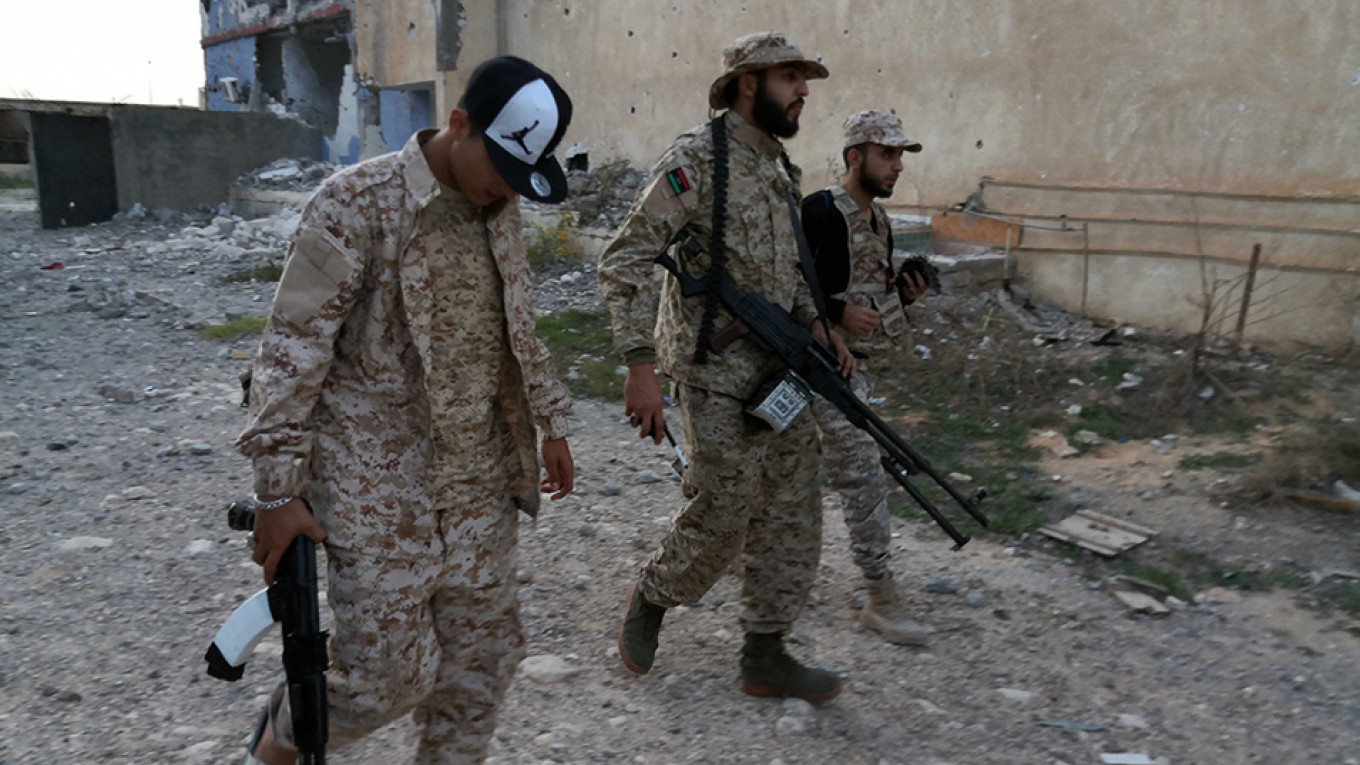 Kremlin’s support toward Haftar’s botched blitzkrieg on Tripoli may once again successfully capitalize on the U.S. and European powers’ collective abandonment of credible diplomacy. While the U.S. is most concerned about Russian military involvement in Libya, the impact of this intervention may actually be reflected in the diplomatic track. Europe’s passivity and disunity — along with the Trump administration’s failure to develop a coherent strategy — have already allowed far less influential players to project influence in Libya. The UAE and Turkey, for instance, have proven to be instrumental actors on the ground. While Russia may lack the political capital to launch an Astana-like process in Libya, its gamble on the inaction of its counterparts may still position it as a power broker.
Kremlin’s support toward Haftar’s botched blitzkrieg on Tripoli may once again successfully capitalize on the U.S. and European powers’ collective abandonment of credible diplomacy. While the U.S. is most concerned about Russian military involvement in Libya, the impact of this intervention may actually be reflected in the diplomatic track. Europe’s passivity and disunity — along with the Trump administration’s failure to develop a coherent strategy — have already allowed far less influential players to project influence in Libya. The UAE and Turkey, for instance, have proven to be instrumental actors on the ground. While Russia may lack the political capital to launch an Astana-like process in Libya, its gamble on the inaction of its counterparts may still position it as a power broker.
Russia has deployed a large number of Wagner mercenaries and regular uniformed personnel in support of Haftar’s offensive. This intervention coincided with Germany and UN Special Representative Ghassan Salamé’s launch of the Berlin Process in September 2019. The German Foreign Office initially conceptualized this initiative as a summit for intervening states to unconditionally halt their support to the warring parties in Libya.
What the Pentagon needs before it makes a decision on satellite communications
By: Nathan Strout
/arc-anglerfish-arc2-prod-mco.s3.amazonaws.com/public/PPEAI7Q5GBHUVFOZWSL42SM3DU.jpg) The U.S. military will likely take a hybrid approach to meet its satellite communications needs in the future, relying on bandwidth from commercial services and government-owned systems. But the mechanics of how the Pentagon will get there isn’t exactly clear.
The U.S. military will likely take a hybrid approach to meet its satellite communications needs in the future, relying on bandwidth from commercial services and government-owned systems. But the mechanics of how the Pentagon will get there isn’t exactly clear.
According to a Government Accountability Office report released Dec. 19, an analysis of alternatives for wideband satellite communications conducted by the Department of Defense more than two years ago determined the military should depend on a mix of government-owned and commercial satellites for satellite communications. What the report lacked, however, were recommendations on how to get there.
The analysis instead determined the department needed more information to make any recommendations, although the GAO warned the Pentagon does not have a formal plan to gather that information. As a result, Congress’ watchdog agency recommended the Secretary of Defense ensure military leaders develop such a plan.
The Cyberwar Decade: How an Invisible Battlefield Came of Age in the 2010s
By David Hambling
 The Decade, Reviewed looks back at the 2010s and how it changed human society forever. From 2010 to 2019, our species experienced seismic shifts in science, technology, entertainment, transportation, and even the very planet we call home. This is how the past ten years have changed us.
The Decade, Reviewed looks back at the 2010s and how it changed human society forever. From 2010 to 2019, our species experienced seismic shifts in science, technology, entertainment, transportation, and even the very planet we call home. This is how the past ten years have changed us.
The 2010’s saw a step change in cyber warfare, defined as attacks against a nation by a computer. Rather than just being used for spying, this was the decade the digital world was weaponized to break through to the physical.
Analysts had long warned about the potential for cyber operations. Now, malware has attacked machinery, power grids, and military control systems and brought a new dimension to warfare.
In 2010, the Stuxnet worm targeted Iranian nuclear facilities. This was no ordinary piece of malware, but the product of what political scientist P.W. Singer called “a Manhattan Project-like” effort, by unknown actors.
Review – Violence and Civilization
By Andrew Linklater
Andrew Linklater’s most recent contribution to his Harm trilogy, Violence and Civilization (2016), which is the second book in the series following from The Problem of Harm in World Politics (2007), looks at the historical processes by which modern states drew on historical progenitors to develop their supposedly superior approaches to violence and civilization. As such, it is a work of historical sociology and international relations; but it is much more than just that. This review is motivated by two related concerns that go well-beyond the manifest quality of Linklater’s newest work as contributions to the fields of sociology and IR: first, given the ample references to this tradition, and Linklater’s intellectual legacy within it, what makes this book a contribution to Critical Theory? And second, what is the ethical argument presented in the book? The answer to the first provides the basis for the answer for the second.
First, if scholarly work in the tradition of Critical Theory does one thing (and it never does just one thing, but if it did) it would be dereification, and Violence and Civilization is at its core a work of dereification. Linklater’s book dereifies (by historicizing) the development of civilizational narratives in connection to norms of self-restraint and non-violence (as well as their opposites). Though the concept of civilization is itself insufficiently criticized in this book, dereification here is generally carried out successfully to provide a deeper historical contextualization and denaturalization of our present imagination about the differences (and similarities) between various “civilizations” with respect to norms, practices, and beliefs about war and harm.
Forget Nuclear Weapons, Cutting Undersea Cables Could Decisively End A War
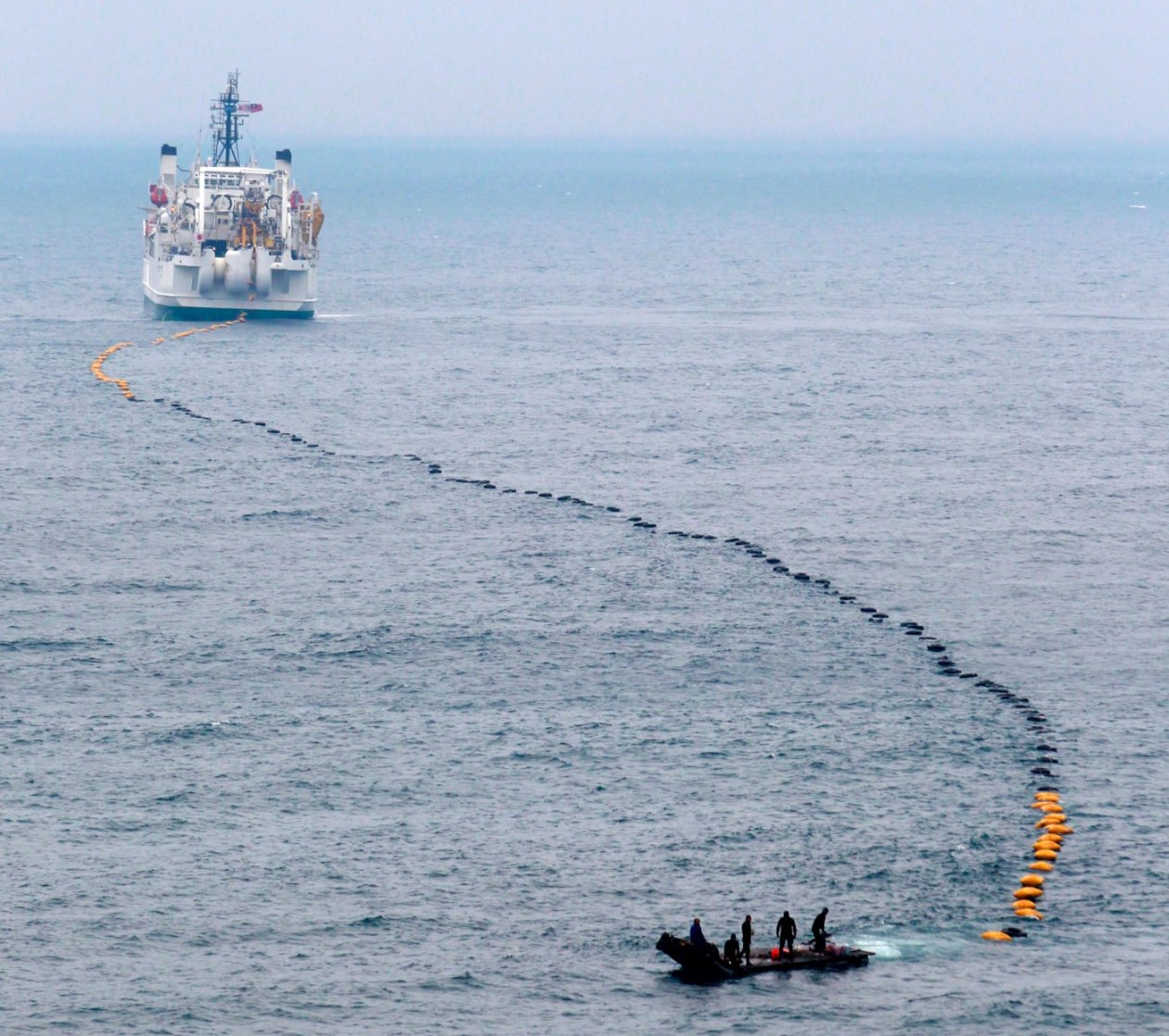 When a July 2015 undersea tremor triggered a rockslide between the islands of Saipan and Tinian in the Northern Marianas Islands, it cut the only fiber-optic cable connecting the archipelago to the global network. Air traffic control grounded flights, automated teller machines shut down, web and phone connections broke.
When a July 2015 undersea tremor triggered a rockslide between the islands of Saipan and Tinian in the Northern Marianas Islands, it cut the only fiber-optic cable connecting the archipelago to the global network. Air traffic control grounded flights, automated teller machines shut down, web and phone connections broke.
All the feared impacts of a cyber attack became real for the islanders. A Taiwan-based cable repair ship eventually restored the link, but that was a single break from one natural occurrence. How much more disruption could a deep-sea-faring nation cause its rivals through malicious intent?
Though often mentioned in passing, the fact that the overwhelming bulk of Internet activity travels along submarine cables fails to register with the public. High-flying satellites orbiting the crowded skies, continent-spanning microwave towers and million miles of old 20th Century copper phone wire all carry but a fraction of the Earth's Internet traffic compared with deep-sea fiber-optic cables.

